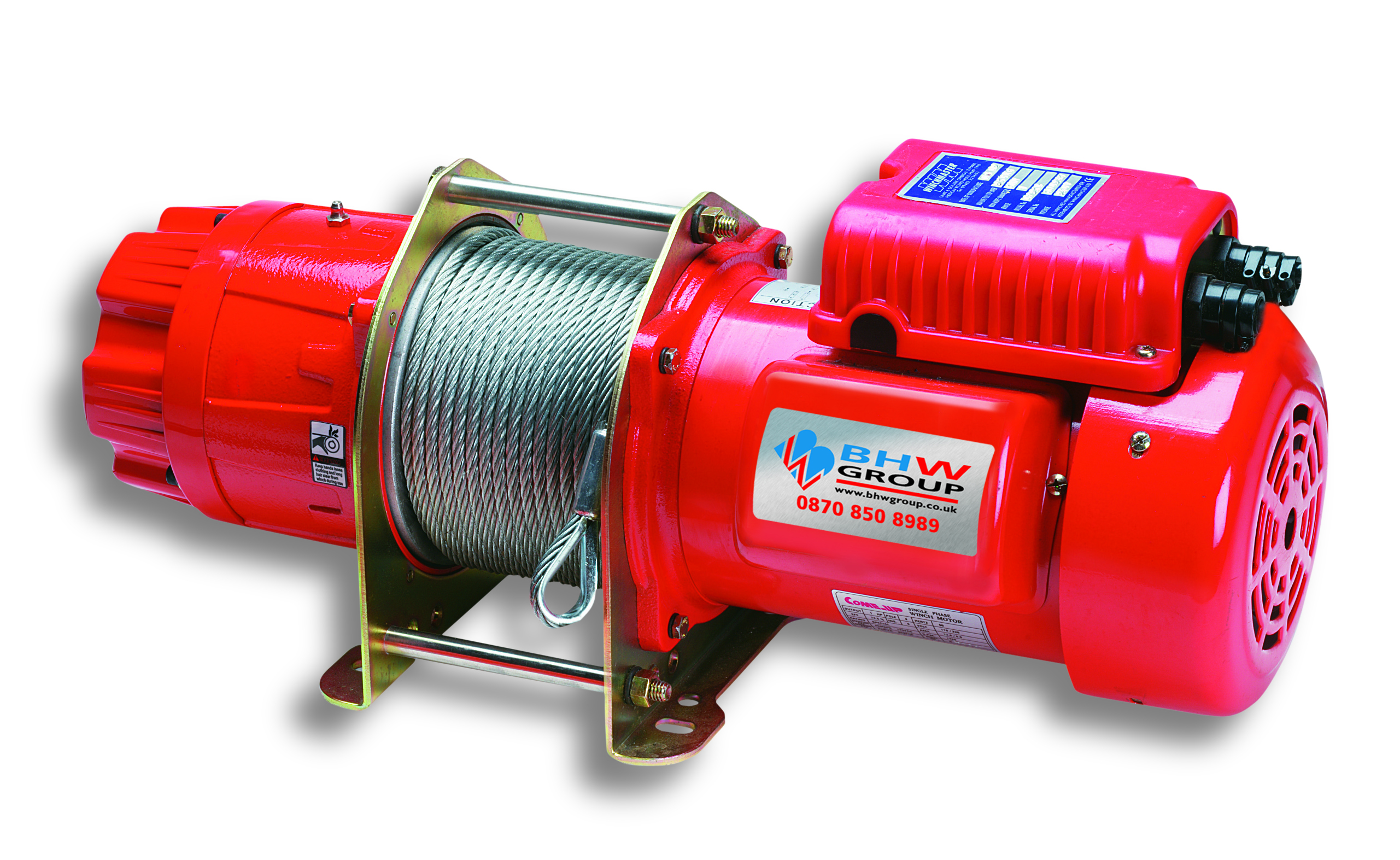
ComeUp CWG WINCHES 300kg
ComeUp CWG WINCHES 300kg
- CWG10077 (300kg), CWG30075 (300kg)
- 110v or 240v x 1ph or 415v x 3ph AC
FEATURES INCLUDE
- Single or 3 phase options
CWG10077 = 110V or 240V x 1ph
CWG30075 = 415V x 3ph (Includes low voltage control) - Electromagnetic, spring applied, failsafe brake
Provides instant, safe braking - Bi-rotational
CWG winches can be installed with wire rope coming off the top or bottom of the drum - Enclosed drum flange
Prevents rope becoming trapped between drum and support casing - Complete with wire rope
Galvanised for longer life - Compact design
For easy installation - 360º weighted safety hook
Swivel type with safety catch - 2 metre power lead
Pre-wired to the winch with commercial type plug - Motor to IP44 as standard
Brush type motor, no options
OPTIONAL EXTRAS
- Low voltage control (supplied as standard on 3ph)
- Radio remote control – via low voltage control
- Weather proof enclosure
STANDARDS & BHW GROUP LTD
The British Standard: BS EN14492-1 for power driven winches, BS EN14492-2 for power driven hoists provides the means for conformity to essential Health and Safety requirements of the EN Machinery Directive and the essential Health & Safety at Work Act 1974.
Conformity to these standards is the joint responsibility of the supplier, the installer and the company operating the product.
BHW Group Ltd products are fully compliant and carry a CE mark. A Declaration of Conformity is also supplied with each winch or hoist.
Our aim at BHW Group Ltd is to ensure the correct machine is supplied to suit the application and we welcome the opportunity of discussing the proposed application and offer advice. It will help us considerably if information regarding the maximum and average loads to be lifted or pulled – and approximate frequency of use can be provided.
For hoisting applications the minimum breaking force (MBF**) of the wire rope must be 5 x the lifting capacity of the hoist. The ratio of wire rope diameter to mean drum diameter* is usually at least 15:1. This will vary according to the application, the average operating time per day and the average and maximum weights being lifted.
For pulling applications. As a general rule winches used in pulling applications rarely see their maximum rated capacity and are used intermittently for short running periods. In these applications the wire rope MBF** to winch rating can be a minimum 2:1 and the ratio of wire rope to mean drum ratio* as low as 10.1. In applications where the winch is used for longer running times and more frequently sees higher loading conditions the wire rope to MBF** should be 3:1 and the ratio of wire rope to mean drum ratio* 12:1.
For recovery vehicles the permissible standard of wire rope MBF** to winch rating can be a minimum 2:1 and the ratio of wire rope to mean drum ratio* only 10:1. This minimum standard is permitted because the running time is so short and the winch rarely sees maximum load.
Wire rope capacities the maximum amount of wire rope on the drum must leave a freeboard to the top of the drum flange of 1.5 x wire rope diameter to prevent the wire rope coming off the drum.
Winches and hoists with capacities over 1000kg must be load limited.
* Mean drum diameter = the drum diameter plus the diameter of the wire rope. ** MBF = the Minimum Breaking Force of the wire rope.
